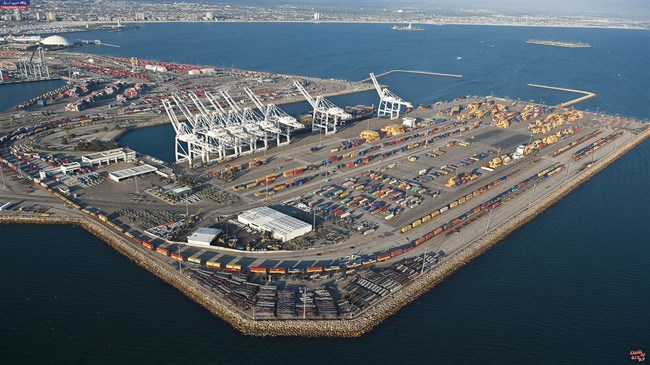India Moving to Develop Chabahar Port

With India taking over operations at Iran's Shahid Behesti port in Chabahar, New Delhi has reached an important milestone in realizing its economic and strategic ambitions in Central Asia.
Operating Chabahar port will provide India with a foothold at the mouth of the strategic Straits of Hormuz, through which a third of all the world's sea-borne oil passes.
India's investment, development, and operation of Chabahar port will strengthen its relationship with Iran, its third largest oil supplier.
The port is a gateway to an overland trade corridor through Iran to Afghanistan. It will enable India to play a larger role in Afghan reconstruction.
This trade corridor could expand India's trade ties with the Central Asian Republics (CARs), which currently stands at a meager $1.5 billion, accounting for just 0.11 percent of India's overall trade.
Once Chabahar is linked to the multimodal International North-South Transport Corridor (INSTC), India hopes it will become a gateway for its trade with Eurasia as well.
It is estimated that with the operationalization of Chabahar port and INSTC, India's trade with Eurasia could touch $170 billion ($60.6 billion in exports and $107.4 billion in import).
India is developing the Shahid Beheshti terminal at Chabahar over five phases and on completion, the port's capacity will be around 82 million metric tons per annum. State-run Indian Ports Global Limited (IPGL) will be responsible for the port's management for a temporary period of 18 months and if the two sides agree on extending the lease, a 10-year period thereafter.
India has provided a capital investment of $85.21 million and annual revenue expenditure of $22.95 toward equipping two berths at Chabahar port for Phase I.
It is constructing a $1.6-billion railway line from Chabahar to Zahedan, near the Iran-Afghan border. Besides, Indian private and state-run petrochemical and fertilizer companies are planning investments worth $20 billion in Chabahar Free Trade Zone.
Chabahar's location gives the port immense economic and strategic significance. Situated at the mouth of the Gulf of Oman on Iran's Makran coast, it gives Iran direct access to the Indian Ocean.
Chabahar port is Iran's first deep-sea port. Hitherto, Iran's shipping industry was restricted by the absence of deep-sea ports in the country. Bandar Abbas, which handles the bulk of Iranian shipping, for instance, cannot receive ships exceeding 100,000 tons. Therefore, high tonnage ships dock at the United Arab Emirates, where the cargo is then loaded on to smaller ships better suited for Bandar Abbas port's more shallow waters. The deep-sea port at Chabahar will save Iran millions of dollars in fees to the UAE and reduce its dependence on that country.
Chabahar port will also reduce landlocked Afghanistan's dependence on Pakistan for access to the sea.
As for the landlocked CARs, which have been relying on ports in Turkey, Russia, the Baltic States, China, and Iran (via Bandar Abbas), the route through Chabahar will provide them with another option and the shortest overland route to conduct their maritime trade.
The plan is for Indian shipments to be offloaded at Chabahar port, where cargo would be loaded on to trucks and trains to Zahedan and onward to Zaranj in Afghanistan.
Goods can be transported then to any part of Afghanistan via the Ring Road, even beyond, to the CARs. Likewise, goods from Afghanistan and the CARs — the latter have trains that are already linked with the Iranian rail network — reaching Zahedan would be transported overland to Chabahar, from where ships would carry the cargo to India and other countries.
It was in 2013 that Iran first put forward to India its plan to develop Chabahar into a regional trade and transshipment hub. It has taken a long time for that plan to become a reality.
Key to the future of Chabahar is the frequency of traffic and volume of shipments the port will draw. At present, India is focusing on shipments to Afghanistan but this isn't enough to make Chabahar port economically viable.
To tap the Chabahar project's full potential, connectivity in the region needs to improve but capital deficit issues have kept the Chabahar-Zahedan railway project from gathering steam.
China could also participate in the Chabahar port project. Iran has made it clear several times that "it would like to invite more players, including China and Pakistan", to participate in the Chabahar project.
* Sudha Ramachandran is an independent journalist/researcher based in Bangalore, India.
Source: Iran Daily

